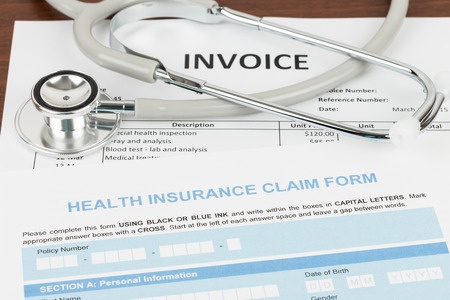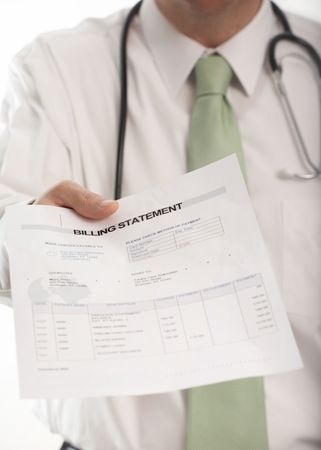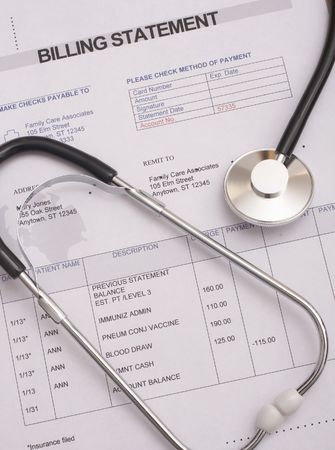Nationally, more and more self-pay medical billing accounts have fallen in arrears in recent years. Despite the growth of insurance plan access, hospitals and health care providers from coast to coast are facing increasingly high deductibles and patients who remain uninsured under the Affordable Care Act. By some reports, these outstanding accounts represent as much as 4 percent of the total spent on health care annually, or as much as $120 billion dollars a year according to an article in the September edition of the Healthcare Financial Management Association’s monthly magazine.
With such an incredibly high volume of outstanding debt at stake, it’s become vitally important for institutions to solidify their approach to handling accounts receivable from individual payers. Patients with high deductible insurance plans and uninsured patients represent a large number of the total accounts at many hospitals and care centers – as much as 73 percent of the total accounts at some facilities, according the HFMA data, with debt in A/R representing up to 40 percent or more of the total outstanding debt totals.
Ahead of the Curve
To get ahead of the problem, article author Richard DeSoto recommends that providers organize their approach to all patients around five core opportunity areas. These times in the patient care, admission and after-care processes give hospitals and health care providers multiple chances to establish and reinforce a payment process for these clients – self-pay, partial self-pay and fully insured, alike.
 From the outset, hospitals and providers should identify all coverages and eligibilities at the start during a patient’s scheduling and preregistration process. By having an effective system in place that not only collects all applicable information, but provides patients with an early expectation of potential costs to them, providers can better establish the expectation of payment and even collect payment information up front. This process can then be reinforced at the second stage – admissions – where providers can proactively review a patient’s coverage and eligibility to provide an estimate of the full charge that they are expected to pay and collect payment or develop a payment plan at the time of admission for nonemergency care individuals.
From the outset, hospitals and providers should identify all coverages and eligibilities at the start during a patient’s scheduling and preregistration process. By having an effective system in place that not only collects all applicable information, but provides patients with an early expectation of potential costs to them, providers can better establish the expectation of payment and even collect payment information up front. This process can then be reinforced at the second stage – admissions – where providers can proactively review a patient’s coverage and eligibility to provide an estimate of the full charge that they are expected to pay and collect payment or develop a payment plan at the time of admission for nonemergency care individuals.
 Next, during a patient’s time in the hospital, payment urgency can be reinforced through internal communications with individuals. This can be done through passive communications, such as internal commercials or messages on in-facility televisions or radio broadcasts, or through more direct service offers, such as using financial counselors to visit patients individually to discuss payment plans, any assistance eligibility and establishing a payment program that can help patients repay over time. This should then be reinforced at discharge by providing clear directions on payment policies and procedures with discharge paperwork. Facilities can also use scripted check out processes that ask patients how they will be paying or offering self-service kiosks that can accept electronic payments and save both staff time and reduce interactions with the patient.
Next, during a patient’s time in the hospital, payment urgency can be reinforced through internal communications with individuals. This can be done through passive communications, such as internal commercials or messages on in-facility televisions or radio broadcasts, or through more direct service offers, such as using financial counselors to visit patients individually to discuss payment plans, any assistance eligibility and establishing a payment program that can help patients repay over time. This should then be reinforced at discharge by providing clear directions on payment policies and procedures with discharge paperwork. Facilities can also use scripted check out processes that ask patients how they will be paying or offering self-service kiosks that can accept electronic payments and save both staff time and reduce interactions with the patient.
Finally, in the post-billing cycle, approaching accounts smartly can help provide the most effective results. While larger debt accounts have the largest payoffs, smaller accounts are often smarter choices to focus collection efforts around as the totals are more manageable and more affordable for many self-pay consumers. Targeting these accounts with an effective approach that balances automated calling and mailings, as well as direct calling support can help bring in these debts. In addition, performing proactive outreach – placement of payment kiosks in community areas or offering financial counseling and payment events at local facilities, nursing homes and other occasions, can afford a second opportunity to not only promote the facility, but reinforce payment from outstanding debtors in the community.
What’s Next?
 Once clients are moved into your A/R department, collecting on these debts can also be a financial burden of its own. The HFMA article outlines several case examples of collection staffing costs for facility managers to consider. For instance, for a facility that has roughly 20,000 self-pay patient accounts, expenses for collections staff ranges from $80,000 to $160,000, figuring each staffer is paid an average $40,000 annual salary and works between 5,000 and 10,000 accounts. These expenses quickly add up for larger facilities, urban centers or expansive health care service networks. Plus, the cost-to-return value has to also be considered.
Once clients are moved into your A/R department, collecting on these debts can also be a financial burden of its own. The HFMA article outlines several case examples of collection staffing costs for facility managers to consider. For instance, for a facility that has roughly 20,000 self-pay patient accounts, expenses for collections staff ranges from $80,000 to $160,000, figuring each staffer is paid an average $40,000 annual salary and works between 5,000 and 10,000 accounts. These expenses quickly add up for larger facilities, urban centers or expansive health care service networks. Plus, the cost-to-return value has to also be considered.
Facilities also need to consider the time factor that may play into accounts, as well. There are legal standards in most areas that apply limitations on the period of time that debts can be legally pursued. Look for more on this in our next blog post.
How Can C & E Acquisition Group Help?
At C & E Acquisition Group, we have experience with helping facilities of all sizes better manage and increase their returns on aged and self-pay receivables through our REVENUE 120 and REVENUE 365 programs. By allowing us to analyze and assess your current outstanding debts and debt collection practices, we can identify ways for you to improve your management of A/R and receive a more rapid return on your overdue accounts. With cash up front for your accounts, you can invest in sound strategies to help make improvements to your policies, practices and procedures, giving you the opportunities you need to get ahead in the account management curve. Contact us today to schedule a free consultation and learn more about how our process can help you.




